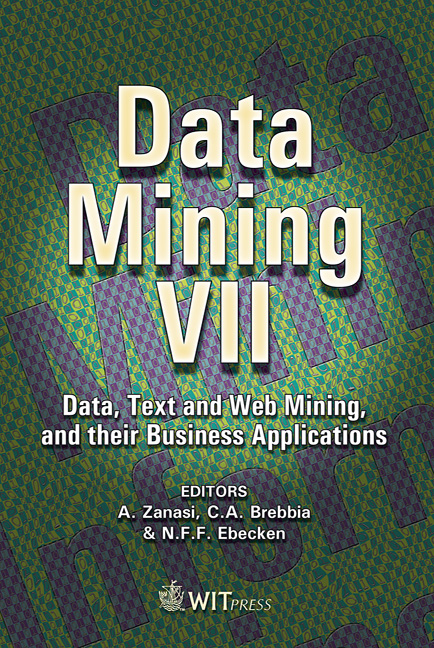Telco Churn Analysis Classification Using A Wavelet And RBF Approach
Price
Free (open access)
Volume
37
Pages
10
Published
2006
Size
453 kb
Paper DOI
10.2495/DATA060291
Copyright
WIT Press
Author(s)
Â. M. Cister & N. F. F. Ebecken
Abstract
The goal of this paper is to present a quantitative study about Telco churn analysis and the inherent problems of its application and computer processing. An independent customer characterizes the approach and the pre-processing step uses the wavelet transform concept; the pattern classification problem is solved by an artificial neural network (RBF- Radial Basis Function). The signal representation considers different levels of resolution (multi-resolution). This idea is frequently used in image/video processing where general image versions with a low resolution are stored in different levels of resolution. The concepts of multi-resolution have been implemented by a digital filter bank, Hi-pass and Low-pass. Each sub-band will give the best resolution, for each spectral region. The idea is to look for a spectral transient. A scalable Daubechies’ function db 2 and db 3 were tested for this study and the results were used as input for the RBF neural network. Daubechies’ function has shown important properties as for instance, orthogonality and scalability, which are not presented by Morlet’s function. Some results of the experiment were presented to point out the performance of the wavelet pre-processing approach. Keywords: churn analysis, wavelet transform, RBF neural networks. 1 Introduction There are many literary works that are aimed at the new political-economic order imposed by diverse countries in the last decade of the 20 th century. The present theoretical study is not meant to incite criticism against, or in favor, of the new economic order. The truth is that companies from different segments, mainly
Keywords
churn analysis, wavelet transform, RBF neural networks.





